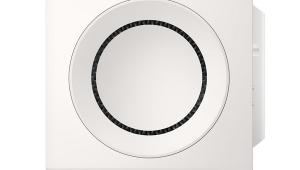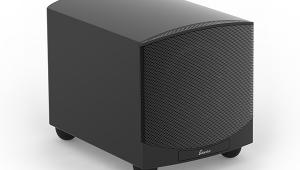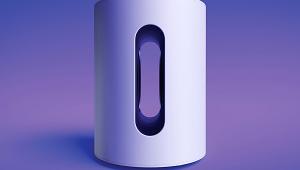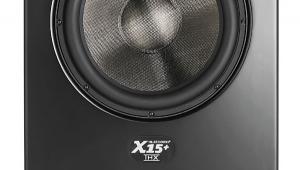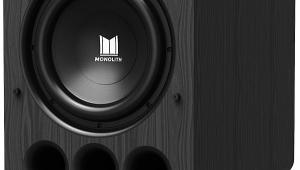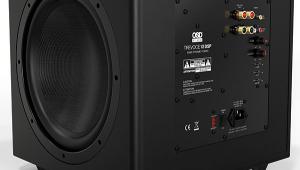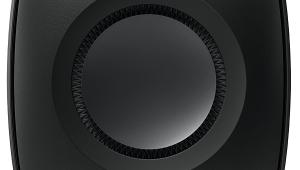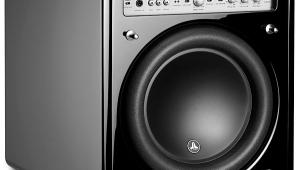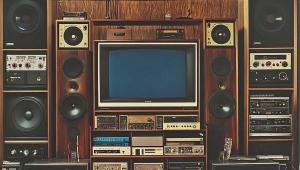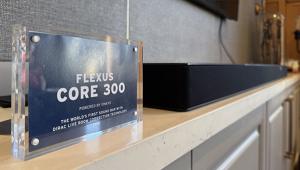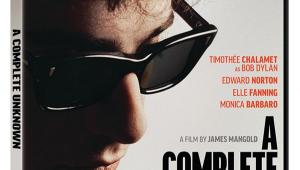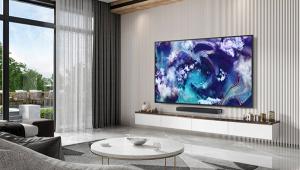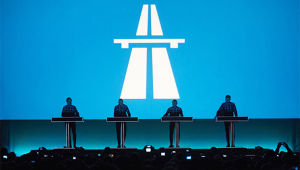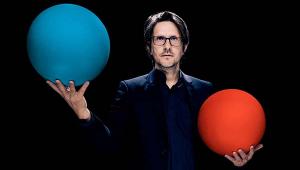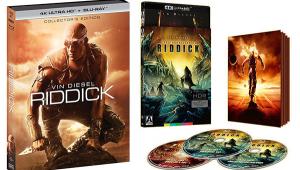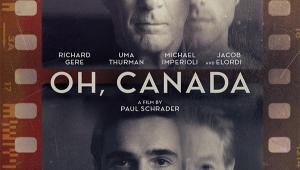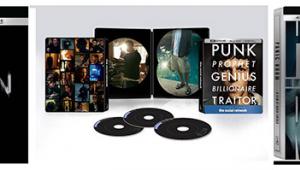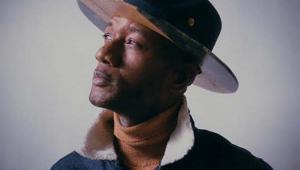I appreciate this product. It is awesome. Besides, I recommend geometry dash scratch which is truly interesting. I love it because it offers thrilling journeys.
RSL SpeedWoofer 12S Subwoofer Review
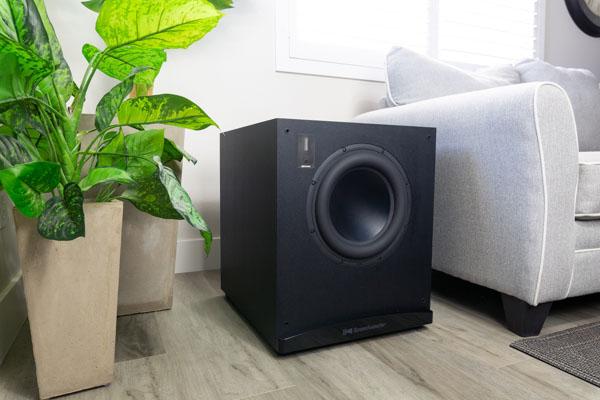
AT A GLANCE
Plus
Poised, even when pushed hard
Response rated into the teens
All this output from a single 12-inch driver?
Minus
No XLR (balanced) input
Large relative to other RSL subwoofers
Similar in price to the competition now
THE VERDICT
The SpeedWoofer 12S is a fantastic addition to the RSL family of products, it’s a subwoofer that does it all. Don’t be surprised if you find yourself saying ‘this thing only has a 12-inch driver?’. I certainly did.
RSL Speakers, by now most of you have heard of this company. But a decade ago? Not so much. I suspect the reason — or to be more precise, reasons — you’ve heard of them now are manifold. Among those are their attention to detail, impeccable build quality, incredible performance and outstanding value. But perhaps the biggest reason is RSL’s unparalleled customer service; they epitomize the concept of going over and above. When your company and its products check all the boxes people will find you and in RSL’s case they have. In droves.
RSL is the second coming of Rogersound Labs, a popular audio company in Southern California during the 1970s and 1980s. Started by Howard Rodgers, they went on to have a chain of hi-fi stores and a devout following of enthusiastic owners. Howard sold RSL in 1989, sadly it lasted only a few more years under the new ownership and by 1992 they closed their doors. About 11 years ago he revived the company with his son Joe, christening the new endeavor RSL Speakers. Instantly a star was born, and since their resurrection they haven’t looked back. I was fortunate to publish the first review on the newly formed RSL Speakers back in 2012. After hearing what that system could do — especially considering the low price — I was hooked, instantly becoming a fan. Apparently I’m not alone, no matter what forum or website you frequent you’d be hard pressed to find anyone saying a single negative thing about RSL. In this day and age that’s exceedingly rare.
What RSL sent me this time was the hot-off-the-presses SpeedWoofer 12S, their first foray into building a subwoofer with a driver larger than 10”. As you probably already surmised by the name, this one measures 12 inches. I’ve done 2 previous reviews on RSL products, both of which were 5.1 systems, but this time it’s just the SpeedWoofer 12S. Sort of, more on that later.
What most don’t know is the 12S actually started life as the 12X. Designed to be an evolutionary step from the SpeedWoofer 10S, it wasn’t the same subwoofer as the 12S ultimately became. When COVID shut down the world RSL had a rethink and decided to push the envelope even further. Although similar in size, the new direction proved to be a more substantial upgrade than RSL first envisioned. While the driver and amplifier are related to those in the 12X, everything was massaged and optimized to go further and do more. With a larger cabinet and more advanced components all around RSL renamed their new and improved subwoofer the 12S.
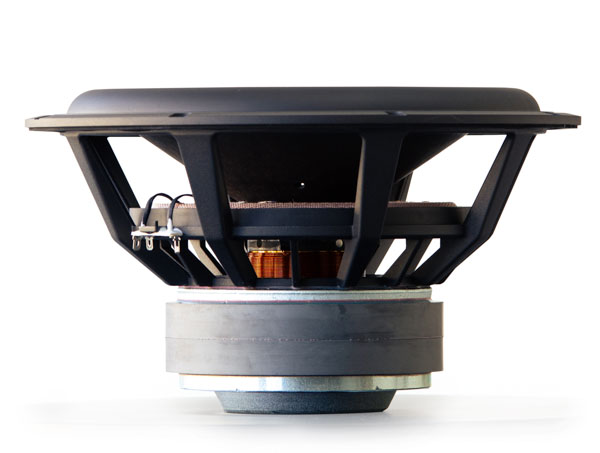
The driver features a fairly unique cone consisting of a Kevlar reinforced paper coupled with an anodized aluminum dust cap. I put that in quotes because when you look at the driver you only see aluminum, there is no Kevlar to be found. A traditional dust cap is a separate half-circle portion of the cone that often protrudes outward, generally covering the end of the voice coil. Not so here as the dust cap takes on the appearance of the cone itself and attaches directly to the NBR rubber surround. It’s almost like having a dual cone, each with its own properties that complement the other. Discounting for a moment the materials individual contributions to the sound quality, aluminum also adds rigidity and acts as a heat sink, aiding in thermal cooling. Since heat is the enemy of every driver, this added benefit helps the SpeedWoofer 12S maintain control even when being pushed hard.
Controls are fairly typical; there are dials for volume, phase, low pass and high pass. That last one is somewhat unique for a subwoofer, if you’re setting up a 2 channel system it can come in quite handy to ensure your speakers and subwoofer are integrated properly. There’s a toggle switch for auto power mode, with options being on or off. For inputs RSL includes speaker and line level (RCA), but not balanced (XLR). You’ll also find a USB-A port to connect RSL’s wireless adapter. There’s a push button for switching DSP modes, of which there are 4 to choose from:
Reference - The flattest frequency response curve, with the deepest extension and the least amount of signal shaping. I chose this one for the duration of my review because it has very little equalization, and can be considered the “purest” of the DSP modes.
Movie - Has emphasis added from about 22Hz up to 50Hz, with a pronounced amount from the mid-20s to the low-30s.
Music - Additional output starting at 30Hz and going to 60Hz. The amount is fairly mild, but you can hear it.
Boundary - Slight boost added from approximately 35Hz to around 70Hz, below 35Hz it rolls off sharply. This setting is primarily for those living in attached housing, such as an apartment or condominium, and is intended to mitigate the possibility of disturbing neighbors.
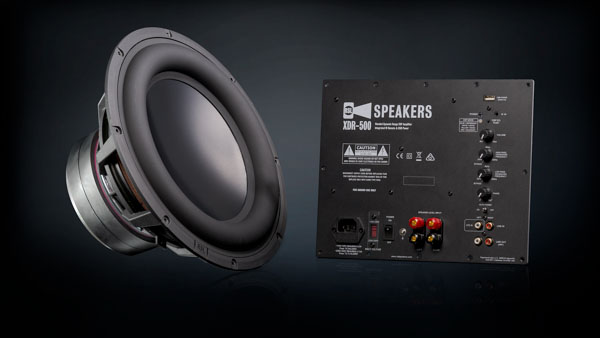
Next to the DSP button there’s an LED that will show a different color depending upon which mode you’ve selected, that makes it very easy to determine how it’s configured with just a quick peek.
Keeping with tradition, RSL includes a remote control. At first glance it looks to be a little light on actual controls, having but volume up and down, a power button and a 4-position DSP adjuster with a mute button in the center of it. Funny thing is, that’s all you really need. The only reason to go around back and make a change on the amplifier itself is if you want to alter the phase, low pass or high pass, something rarely needed. Everything else is on that handy little remote.
The SpeedWoofer 12S comes with unpacking instructions, the typical safety warnings and a quick start guide. The latter is just enough to get off the ground but to really get the most from the 12S you should download the PDF owner’s manual. It’s a comprehensive 19 pages of everything you could possibly want to know about your new toy. Well, 18 pages anyway; there is no page 19. Allow me to explain…
In the table of contents it says page 19 is ‘imaginary’. Seriously, that’s what it says. It’s not the last of the humorous anecdotes either, the footer on the table of contents page says ‘Note: Any mistakes in this manual were intentionally placed to test your alertness’. Know what you’ll find on the very first page? A bold statement saying ‘intoxicating bass awaits you’. That humorous approach to documentation is an RSL hallmark, I’m glad to see that over a decade after the company’s inception they’re still as irreverent as ever.
Of course, no discussion of an RSL product is complete without mention of their exclusive Compression Guide Technology (CGT). When you look at the speakers and subwoofers offered by this company you see ported cabinets, not uncommon in the audio world, but that’s only part of the story. For CGT to work it requires the enclosure be divided into areas of high and low pressure, as the sound wave from the back of the driver passes through these areas of varying pressure the deleterious affects of resonance are diminished to the point of essentially being inaudible. Resonance creates sound impurities so all audio engineers strive to eliminate them, RSL Speakers solution to the problem is the Compression Guide Technology. To aid the flow of air through the Compression Guide RSL smoothed all the edges and corners, minimizing turbulence even further.
Listening/In Use
Before I go any further, let me expand on something I mentioned previously: how RSL sent me a SpeedWoofer 12S, yet my evaluation consisted of a full 5.1 system from them. In July of 2019 I posted a review on a configuration composed of 4 CG5’s, a CG25 and a SpeedWoofer 10S. After the article was published I arranged to return everything, that’s when Howard and Joe Rodgers started telling me about their new subwoofer with a 12-inch driver. Yes, the original conversation was 4 years ago. I was perhaps one of the most vocal when it came to their subs; I loved everything about them but I wanted bigger (hey, I’m a basshead too you know).
They asked if I would send the 10S back but suggested I hold onto the speakers, the intent being they would send me the first 12S released into the wild. I could then review another 5.1 system using their new 12-inch subwoofer as its foundation. How long do you think it took me to say ‘yes’ to that offer?
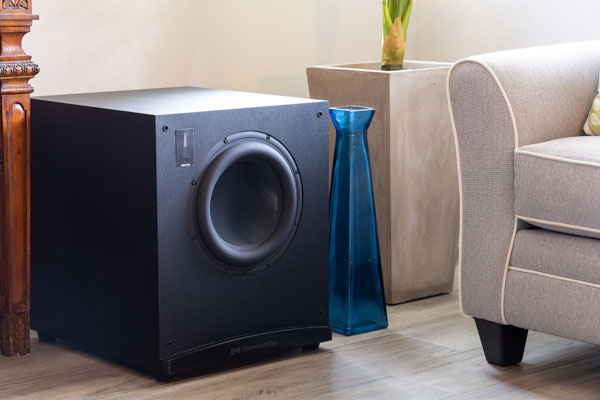
Over the years I’ve come to know that Howard and Joe are perfectionists, refusing to release anything until it’s been vetted three ways to Sunday. So I already anticipated there would be an elongated gestation period for this new subwoofer. What I didn’t anticipate was that pesky little global pandemic, and obviously neither did RSL. When it hit they did the same thing we all did, went into lockdown. Development on the 12S came to a grinding halt. At that time I asked again if they wanted me to return their speakers, and once more they replied ‘keep them until we have our new subwoofer to send you’. I boxed them all up and put everything aside, waiting for the day when things would return to normal. Over the past 4 years I have kept in contact with the Rodgers so I knew what was going on with their subwoofer journey. Finally, after what seemed like eons, a SpeedWoofer 12S landed on my doorstep. Time to get those CG5 speakers out of cold storage and make myself a nice RSL 5.1 system. This review will not have any references to the speakers though, it will focus solely on the 12S. That’s the new kid on the block, everyone already knows how good the RSL speakers are so I decided to shine the spotlight on the subwoofer instead.
Why the rambling missive about a full system if I will only be commenting on the sub? It’s quite simple; what I am doing is replicating what most RSL customers will, building their entire system solely around this company’s products. Sitting in front of me are RSL’s best speakers and their best subwoofer, the pinnacle of what these folks offer. Based upon past history I know this setup won’t be all that different to what a lot of their customers will build, to get the true essence of the 12S I wanted to experience the same thing they would. If nothing else, it gives me an excuse to use the CG’s again. I love these speakers; you won’t have to twist my arm to hook them up.
Movies
The films I used in my first RSL review are a who’s who of heavy hitters, but I couldn’t reuse them all. Back then I would include scenes from 6+ movies, by the time I did my second RSL evaluation it was 3 so I decided to go that route instead. I threw in a fourth however, just because. Check that, in the end the total turned out to be 5. Why? I felt like it. Maybe I should have just used 6 and been done with it.
Edge of Tomorrow: you know the movie, you know the scene, I don’t need to make any more of an introduction than that. But I do need to explain something. While exchanging emails with Joe Rodgers about another topic I casually asked how he felt about me stomping on his subwoofer with a brisk session of this movies intro. Given that the 12S is ported — and its driver will essentially run unchecked, in ‘free air’, when it attempts to reproduce the lowest notes — I suspected some trepidation. His verbatim response was “Regarding Edge of Tomorrow, go for it! The SpeedWoofer will be fine.” Why thank you Joe, don’t mind if I do.
The pulsing sensation that unnerves so many subwoofers is essentially a frequency sweep with 5 distinct plateaus, each of which gets lower and louder. My modus operandi is to start at a restrained volume level, see how the system fares and then rerun the sequence after increasing the volume. Lather, rinse, repeat until it either coughs up a hairball and makes really unpleasant sounds, or simply stops getting louder. Almost without fail, the subwoofer I’m evaluating cries out in pain and starts making ugly noises.
Turns out Joe’s confidence was warranted, and my concern unfounded. The SpeedWoofer 12S did an incredible job, pumping out an extraordinary amount of bass while remaining composed. It ultimately did reach its limit, but when that finally happened the SpeedWoofer did so in a graceful manner. Choosing the second of the 2 possible responses — a controlled tap out — it simply stopped getting louder. Before reaching that point it was intense, the driver pulsating like a piston. There was some port chuffing on the third and fourth levels, but only at a very high volume. There was nothing ever on the first, second, and fifth levels levels (fifth being the deepest). I had to be right next to the 12S to hear any port noise though, with it firing rearward it wasn’t evident from my chair.
The Club Fever scene from the movie Collateral has a driving soundtrack, which is a nice test for a subwoofer. About halfway through, the shooting begins, lots of it, from different caliber weapons. EDM underpins the commotion, pumping out the typical metronomic rhythm characteristic of this type of music. With all that was going on the SpeedWoofer 12S dutifully complied; even at the elevated volume I was using it was unfazed. As everyone opened fire the guns rang out with a solid wallop, each with a unique sound and distinct level of impact. It made knowing who was firing what easy, exactly what you want in a frenzied sequence such as this.
Similar to the Club Fever scene, Assault on Home Tree from the movie Avatar has a lot of weapons. Only in this case they aren’t handguns; these are large caliber. I decided to jump directly to this movie in order to gauge how the SpeedWoofer 12S handled the different intensity level of each type of weapon. Unlike Club Fever there’s no focus on music in this scene, but there is about a 500 foot tall tree that comes crashing down so I reasoned that’s a good trade-off.
The indigenous Na’vi people are under attack, the rumbling produced from the approaching assault aircraft heading their way was palpable. The incendiary devices the invading forces shoot at the base of Home Tree had a pronounced sensation, bursting into flames with a noticeable jolt. Missiles followed shortly thereafter, each exploding with a sharp and decisive thud. All this artillery was focused on the huge exposed roots that Home Tree is perched upon. Eventually it succumbs to the relentless attack and starts to buckle. Waves of bass were sent through my floor when the roots fractured and imploded. As Home Tree lists I could feel it crumbling under its own weight, there was an impressive sense of impact as it finally succumbs and crashes hard into terra firma.
The Fellowship of the Ring, part of the original Lord of the Rings trilogy, is the first of the three film series. I went straight to the Bridge of Khazad Doom scene because that’s what I used in my first RSL review. In order to get the full effect your subwoofer needs to be able to play deep and loud, yet still have enough comportment to be subtle. Sounds like a tall order, doesn’t it?
As the Fellowship is navigating an underground Dwarf lair they come upon a Balrog, a massive demonic beast. Its hellish groan resonated throughout my room, a portent of things to come. As our intrepid warriors try to escape the pursuing Balrog the ceiling of the Dwarf stronghold begins to crumble, raining huge boulders down upon them. They hit with a potent thud. Some carried sufficient force to destroy the cascading staircase the Fellowship was using to escape, resulting in a perceptible sense of destruction. At one point the wizard Gandalf turns to face the Balrog and it lets out a guttural roar, the intensity of that effect as produced by the SpeedWoofer comes at you hard.
Excluding the opening sequence from Edge of Tomorrow, the scenes I chose thus far are more about texture. Sure, they have very deep and challenging parts, but the soundtracks are produced quite well. Not Tron: Legacy, there are numerous scenes recorded so thick that you need a subwoofer capable of supreme nuance if you don’t want to hear little more than obnoxious droning sounds. Let’s see if the SpeedWoofer 12S is up to the task.
The fireworks that exploded at the beginning of the Light Cycle battle scene were… wait for it… explosive! Sorry, I couldn’t help myself. Awful pun aside, each blast was exactly that; a blast. They hit with a clean, resounding bang. Next up is the Daft Punk soundtrack that supports the lightcycle battle itself. The musical score is beefy and can get quite unpleasant, ruining the action on the screen if your system can’t handle it. Not an issue with the SpeedWoofer 12S, despite the overemphasized bottom end it never faltered. All I heard was bass; a lot of it, but with tremendous detail. That balance is what I found most compelling, the SpeedWoofer 12S was unperturbed when confronted with something less than ideal. Everything was smooth and clean, it remained equable the entire time.
Music
I’m going to lead with a classic, Pink Floyd’s groundbreaking album “Dark Side of the Moon”. If you see this show up in one of my reviews you know I’m having fun. You also know that I’m evaluating something special as I don’t drag out Dark Side unless there’s a reason. It showed up in my first RSL article more than a decade ago, the fact it made a return appearance should tell you something.
“Speak to Me” kicks off the album with what sounds like a heartbeat, by showing no restraint with the volume I was able to get my blinds to rattle every time it hit. At its peak I went over to watch the driver, each beat caused it to visibly palpitate. As “Speak to me” segues into “Breathe” the band comes alive, and so too did the 12S. Roger Waters’ bass just poured out of the SpeedWoofer, commanding my attention. I then jumped to one of my all time favorite songs, which just so happens to be called “Time”. When Waters plucks that first open E on his bass guitar the 12S sprang to life, blasting it out into my room. Between that and another heartbeat-like rhythm from Nick Mason’s kick drum, I had a big smile on my face.
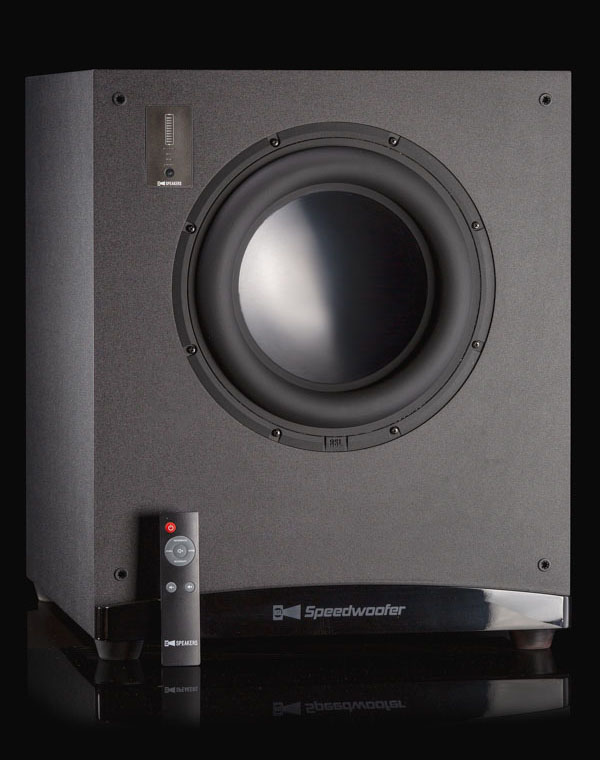
Despite being recorded all the way back in 1972, Edgar Winter’s “Frankenstein” was the beneficiary of a really talented sound engineer. The dynamics, in particular, are evident; the higher notes are clearly distinct from the lower tones. That’s why I chose it, to see if the SpeedWoofer could add punch and clarity. Short answer is yes, it most definitely can. As the horns and synthesizer blared away the sub responded with a rich bass guitar and firm thump from the kick drum, inviting you to crank it up. No matter how active the mids and highs were the SpeedWoofer 12S made sure you couldn’t overlook the bottom end, the balance was very impressive. That turned out to be a lot of fun, think I’ll play it again.
As was the case with movies, I wanted to conclude the music evaluation with something tricky. To do that I’ll need a song with a complex bass guitar lick, wickedly fast drumming and a multitude of changes. So who can provide all of that? None other than John Myung and Mike Portnoy, aka the rhythm section of Dream Theater. These two form the sole of a very talented group of musicians, yet most people have never heard of them. I’ve seen Dream Theater live twice and it is nothing short of astonishing, provided you like very long and energetic songs of course. For DT, an 8 minute tune is merely a warm-up.
I grabbed my copy of “Black Clouds & Silver Linings” and queued up “The Shattered Fortress”. This song has many twists and turns and at times gets aggressive, loud and downright rowdy. At almost 20 minutes long “The Shattered Fortress” is exactly what I wanted. In classic DT style there are multiple rhythms in a single song, the 12S transitioned from one to the other effortlessly. As Myung goes ballistic on his bass guitar, Portnoy followed suit on the drums. No matter how energetic the song got their respective instruments were clearly delineated, easy to identify amongst the chaos. Each had the correct amount of weight, complementing the other. A Dream Theater song needs a great subwoofer to sound its best, and the RSL SpeedWoofer 12S was up to the task.
Conclusion
Part of my job as a reviewer is to uncover flaws in a product, after all nothing is perfect. I’m usually pretty good about finding at least one major weakness, but RSL proves to be a challenge in that regard. Everything I’ve evaluated from this company has been impressive, and the SpeedWoofer 12S is no exception. If forced to say something critical it would be that it doesn’t have the smallest enclosure — relative to SpeedWoofer 10S at least — and that there is no XLR input. Beyond that, I got nothing. Sorry, this subwoofer is just that good. RSL is one of the few companies from whom people will buy both their speakers and subwoofers, as a matched pair, rather than cherry pick individual products from several companies. There’s a reason for that. Don’t believe me? Try them for yourself, bet after hearing what RSL offers you’ll understand what I mean.
Test Bench
The measurements were taken using an Omnimic. The subwoofer was positioned in the center of my listening room with the microphone 1 foot from the front panel centered in the cone, and then 1 foot from the rear panel centered in the port. Red is the driver, blue is the port.
The controls were set as follows:
Volume: Max
Low Pass: 250Hz
High Pass: 250Hz
Phase: 0
DSP: Reference mode

Specs
- Frequency Response: 16 Hz-200 Hz ± 3dB (Reference Mode DSP setting)
- Alignment: Rear-vented Compression Guide™
- Enclosure: 1" MDF front panel, .75" MDF top and side panels, textured matte finish
- Dimensions: 22 1/4" x 18 7/8" x 22 1/8" (HWD)
- Weight: 82 lbs.
- Warranty: 2 years amplifier, 5 years everything else
Woofer
- 12-inch Kevlar reinforced paper cone, anodized aluminum dust cap, die-cast aluminum frame
- NBR surround, dual-mirrored Nomex spiders
- High-excursion motor structure, dual-stacked ceramic magnets
Amplifier
- Series: XDR Series, Class D
- Power: 500 watts RMS, 1550 watts peak
- DSP Modes:
- ❱ Reference: Minimal EQ processing, “natural” response for ideal transient performance
- ❱ Music: Shelved response for extension, but with good upper bass impact
- ❱ Movies: Enhanced output between 25-35Hz to augment low frequency content
- ❱ Boundary: “Neighbor friendly”, reduced lower frequencies to limit rumbling through walls
- Other features:
- 30-250 Hz continuously variable low pass
- 0° to 180° continuously variable phase
- RCA line level, Speaker level inputs
- USB port for AR-4 2.4GHz wireless receiver
- Log in or register to post comments


Hello friends! My experience of playing at Get Slots Casino was just great in Australia. The site offers a great selection of games to suit all tastes. The interface is very user-friendly and easy to use, which makes the gaming experience enjoyable and stress-free. The speed of payouts and ease of financial transactions are really impressive - winnings come very quickly. Bonuses and promotions that are regularly updated add even more excitement and opportunities to win. The customer support team is efficient and always ready to help. I would definitely recommend it!

I am appreciative of this product. It is amazing. I also recommend looking at penalty shooters 2, which is quite interesting. It offers thrilling travel experiences, which is why I love it.

The RSL SpeedWoofer 12S subwoofer at $799 is also a big number to consider when considering other high-quality products capybara clicker

